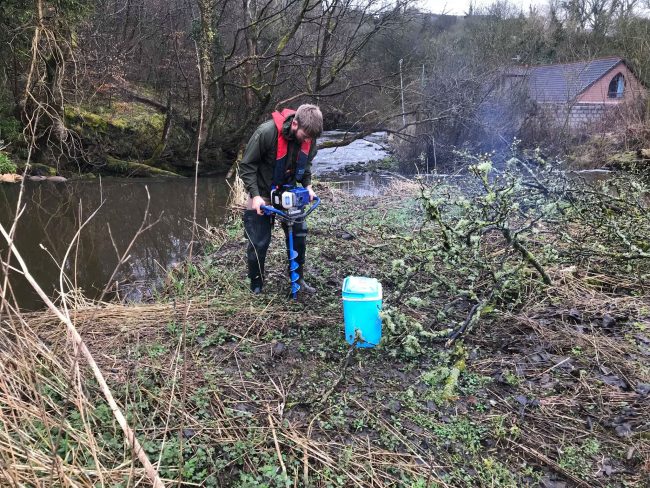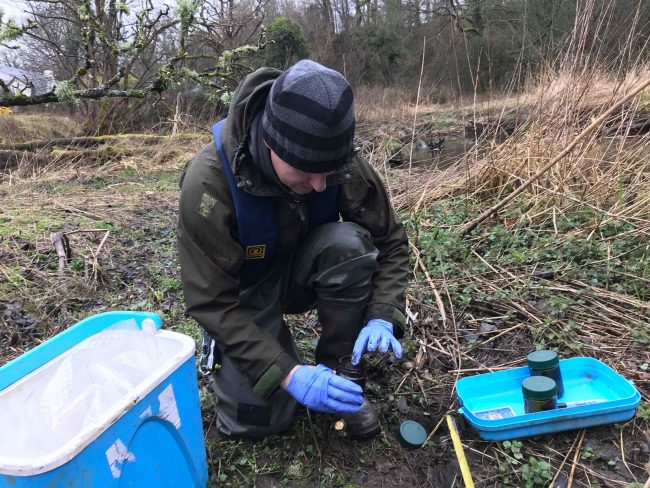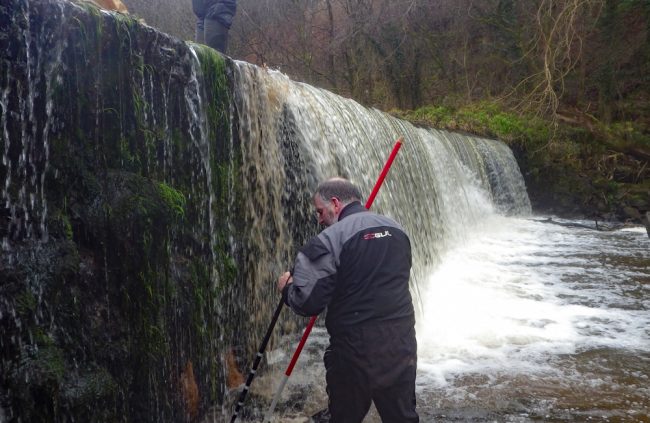We get involved in some great projects but sometimes that involves getting wet and mouthful of water from some very unpleasant sources. Today we were assessing the face of the Sevenacres Weir ahead of commencing installation of a fish pass later this year. The Trust is leading this project assisted by specialists from SEPA and we met there today to discuss several issues and to clear up any concerns we had about the design. As ever, when we answer one question, another arises so we have more to ask the designers before we go to tender. This is a protracted process that so far has taken ART over 12 years to get to this stage.
Muir and Struan took soil samples from the island deposited behind the weir. These samples have been sent for analysis to a lab to check for the presence of heavy metals or other nasty chemicals. Once we know the composition, then we will know how to deal with this.

Struan collecting samples from test holes.

The samples were bottled, labelled and sent by specialist refridgerated courier to a lab for analysis
Following that, we sand bagged sections of the weir to allow an assessemnt to be made of the face and footings of the structure. Stuart was in the water with a dry suit but it wasn’t a pleasant task as some pretty filthy water cascaded over him. Muir was recording the structure in photos and SEPA staff were there guiding us on what they wanted. We also looked at the access for machinery and the areas where stabilisation work will be required.

Sevenacres is a formidable structure and it is only when you get up close to it that the length and height are obvious. It has long been impassable to migrating salmon and trout since a fish pass on the far bank collapsed.
Despite it being a miserable sort of day, we managed to gather the info we required as the water levels started to rise and finished shortly before lunchtime. There’s bedrock below so all seems quite stable. Stuart picked his way across the face of the weir looking for leaks, holes and obvious cracks…there were none. In the middle of the weir, the depth drops vertically to around 2m which prevented us getting to the middle section however we did observe it from the edges as it was sand bagged to divert flow. It’s only when you get right up to the face of the weir that you realise just how high and broad this structure is. Despite being a problem weir, it must have taken a huge effort to construct all those years ago. As far as we can determine, it must be at least 100 and possibly 150+ years old. Originally we think it was built to power a grain mill but we are aware that up to the 80’s , a sawmill was also present at Sevenacres and it may also have power this at some point in time.

